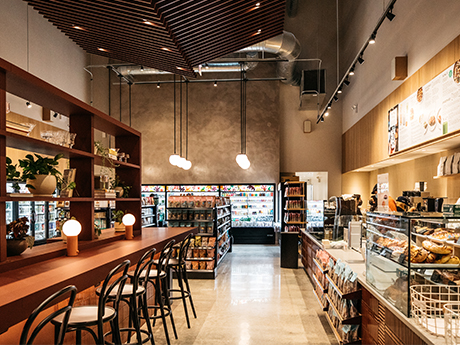So much has been made about the future of retail in the United States. Is it dead? Is it back? How has it evolved?
No doubt, retail was the sector most affected by the COVID-19 pandemic, and that is also true here in Washington, D.C.
If you look at regional data, it appears to be rebounding nicely. The overall market currently boasts a near record-low vacancy rate at just 5.1 percent, according to CoStar Group. Tighter market conditions have helped landlords restore pricing power throughout the District, and asking rents and rent growth have surpassed pre-pandemic highs. When we measure by net absorption, retail demand in the region in 2022 is on pace to reach its highest level since 2016.
But numbers don’t tell the whole story as the retail sector’s recovery in D.C.’s downtown market post COVID differs greatly from all of the metropolitan area’s other submarkets in a scenario that can only be described as a tale of two markets.
Downtown D.C.
So, what’s driving downtown retail these days? Simply, it’s the office market. Retail’s post-pandemic recovery is almost entirely dependent on office workers, and there is no more significant factor at play for its success than corporation’s return to work policies.
With more than 6 million residents in the region, and 1 million more workers and visitors on any given day in the city itself (pre-pandemic), the office sector’s quick pivot to remote work and work from home policies forced many brick-and-mortar operations to close. Those that have come back amid restrictions and are now fully reopened are struggling to survive without office workers and tourists.
In the Central Business District (CBD) submarket, where there is the highest concentration of office buildings in the city, retail vacancy rose from approximately 6 percent in winter 2020 to approximately 20 percent this past summer, according to CoStar. In the East End, the second largest office market in the District, vacancy rose from approximately 9 percent to approximately 21 percent.
Why such a stark contrast? Downtown and high-street retail absorption is predicated on a significant return to office effort.
Kastle Systems, a leading provider of property technology security solutions for commercial real estate, has been tracking the number of daily office workers swiping into office buildings. The firm found that the downtown D.C. office market has been unable to reliably break 50 percent of pre-pandemic levels. Many clients in the CBD and in the East End have expressed a sincere interest in returning to work, but the current trend is two to three days in the office per week.
This prevailing policy does not bode well for downtown retail, and until there is a return to office that is sustained and reliable, retail that is reliant on office occupancy will continue to struggle.
Everywhere else
It’s a completely different story in the rest of the D.C. metro area, especially for those areas that boast dense residential occupancy, new developments and a live-work-play environment. These locations remain fiercely competitive with record low vacancies and sky-high rental rates.
For example, the Bethesda Row submarket — the business and retail center of Bethesda, Md. — boasts the lowest vacancy rate in the region at sub 2 percent, according to Federal Realty Investment Trust, owner and developer of the premier Bethesda Row mixed-use development. The submarket also has average rental rates ranging between $75 to $150 per square foot triple-net depending on the space’s size and location.
Loudoun County, a quickly growing submarket with a mix of retail, culture and entertainment, is also experiencing record-low vacancy at approximately 5 percent and triple-net rental rates at $32 per square foot, according to CoStar. A flight to quality and exposure to an upwardly mobile population has driven their success and continues to generate demand.
While it doesn’t hurt that the D.C. suburbs are among the wealthiest in the nation, there is something to be said about thoughtful tenant curation by developers. A project like The Wharf, a two-phase, $3.6 billion project that just delivered its final phase in October 2022, has vacancy below 1 percent, proving that when developers are thoughtful about their tenancy, and design their projects to be a destination and an experience giving people a reason to leave their homes to shop in person, positive results follow.
So, is D.C. retail on life support, or is it thriving? Downtown D.C., whose retail success is reliant on office occupancy, will continue to struggle until more people are back at their offices full time.
Meanwhile suburban submarkets, and those markets that are not reliant on office workers and also offer a work/life balance, are not only back, but are better than ever.
— By LaMean Koroma, Senior Vice President, Cresa. This article was originally published in the November 2022 issue of Southeast Real Estate Business.



